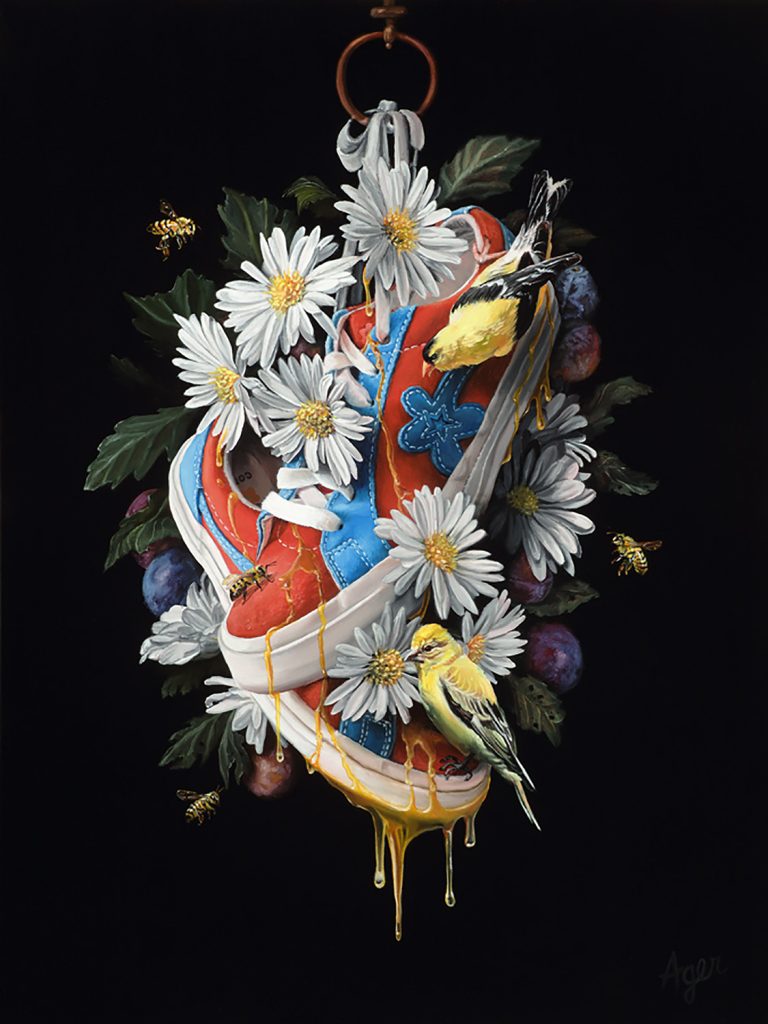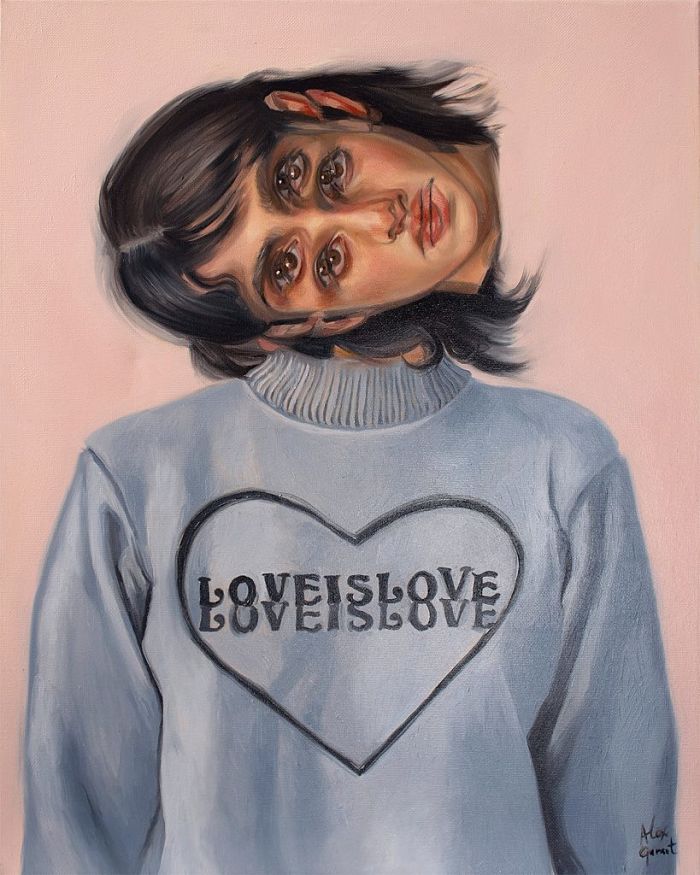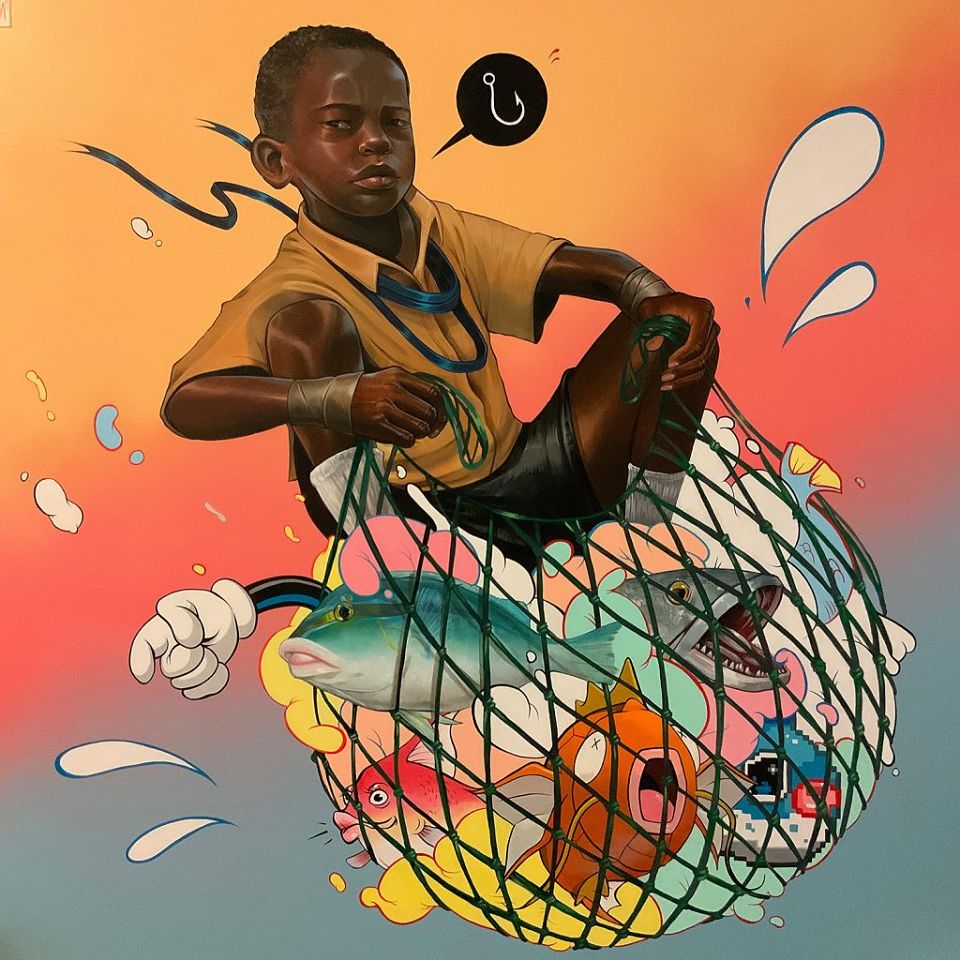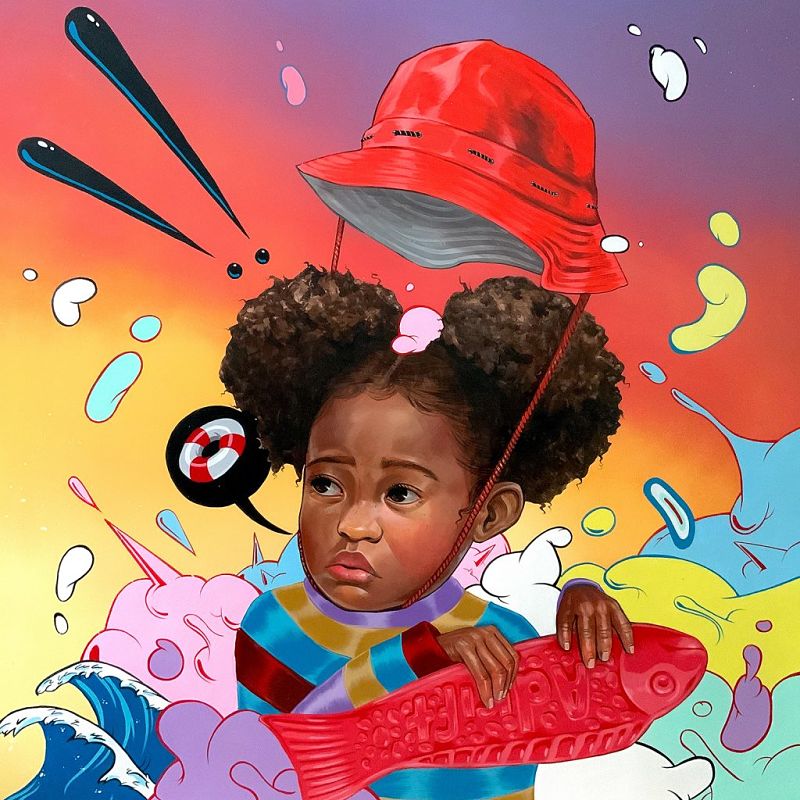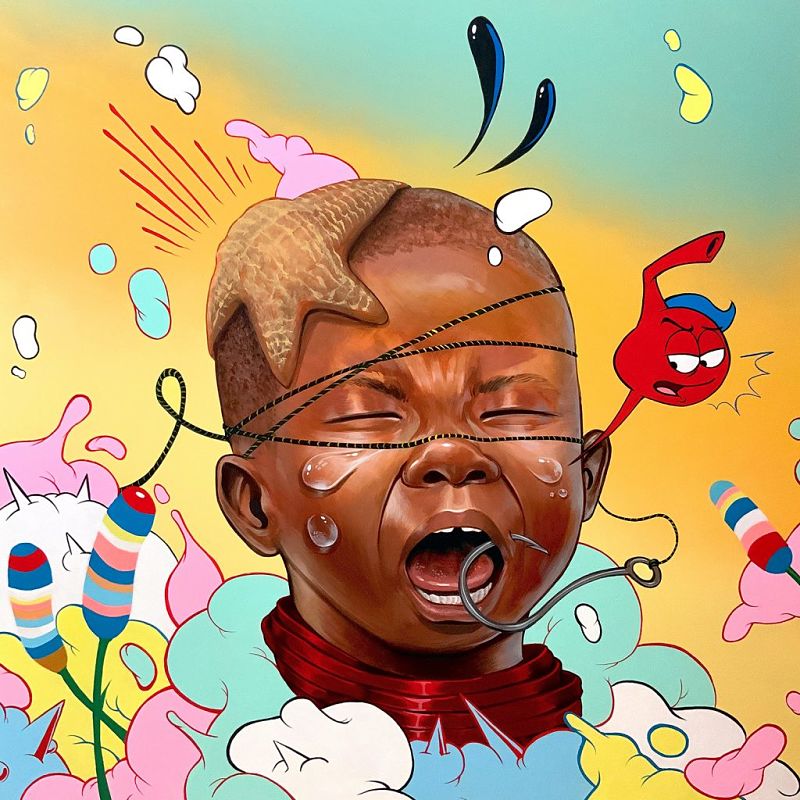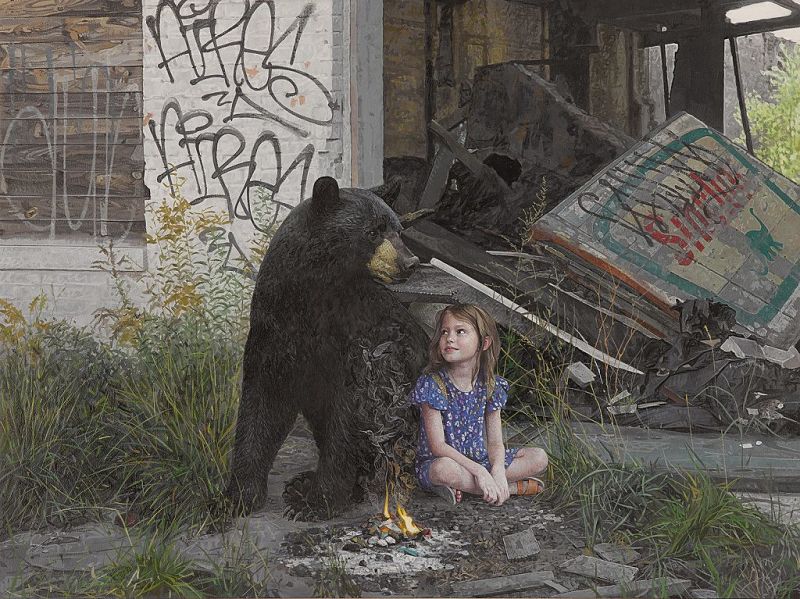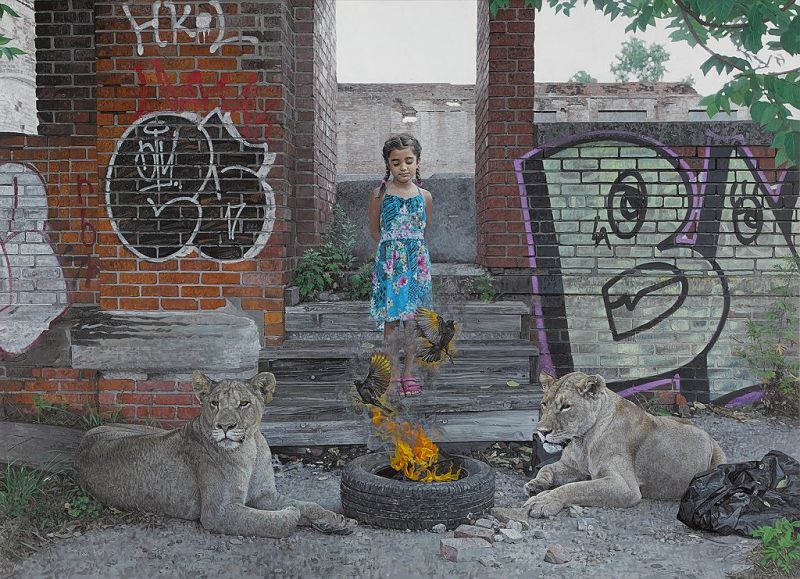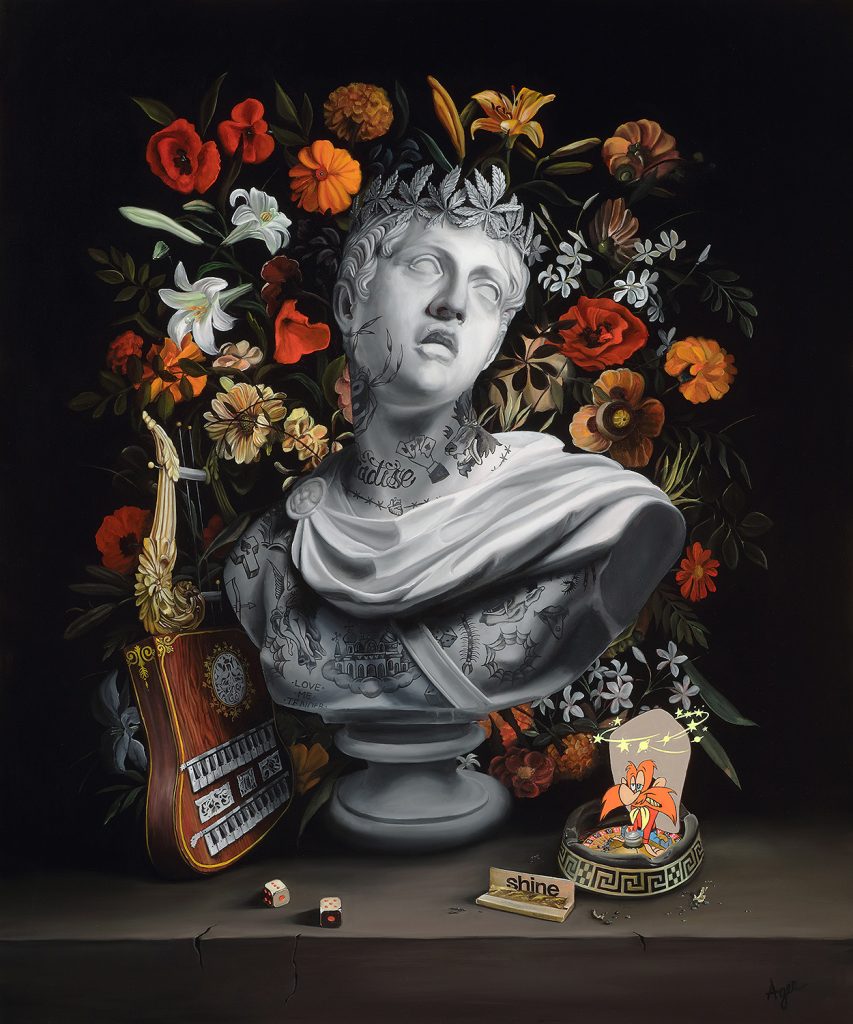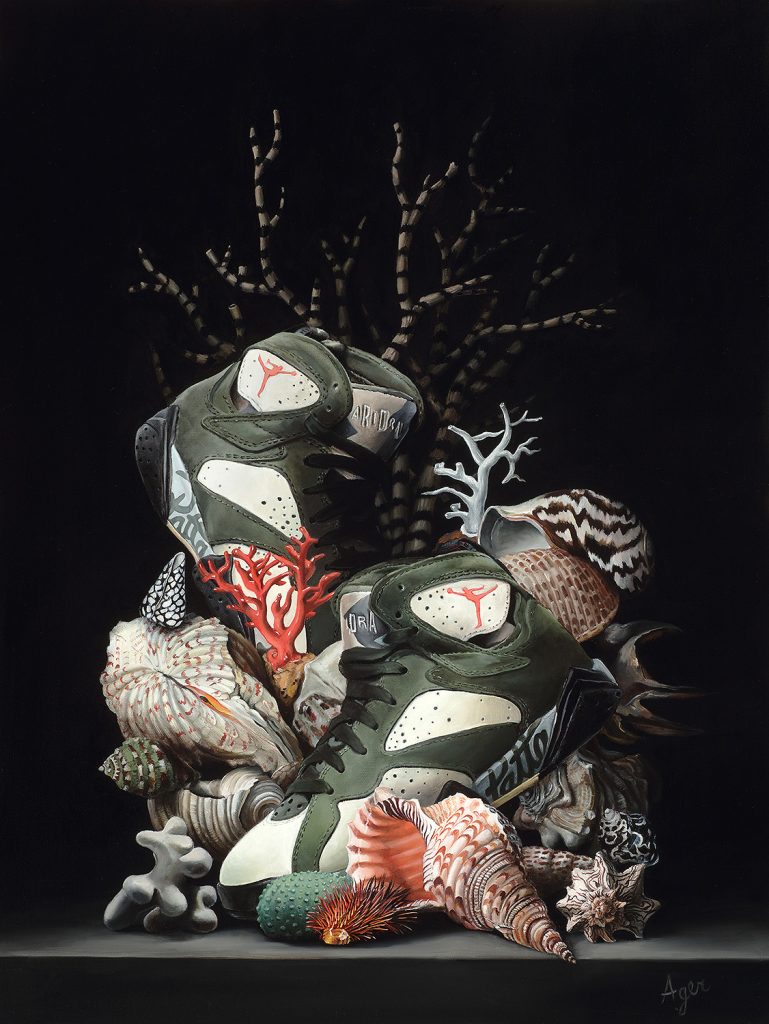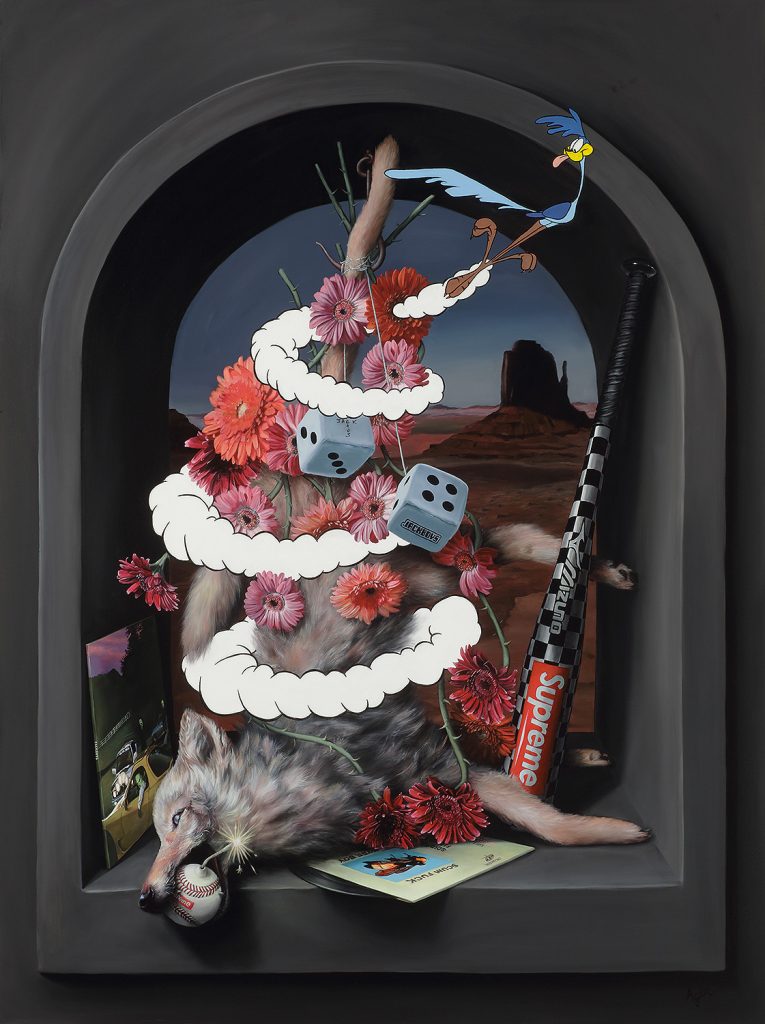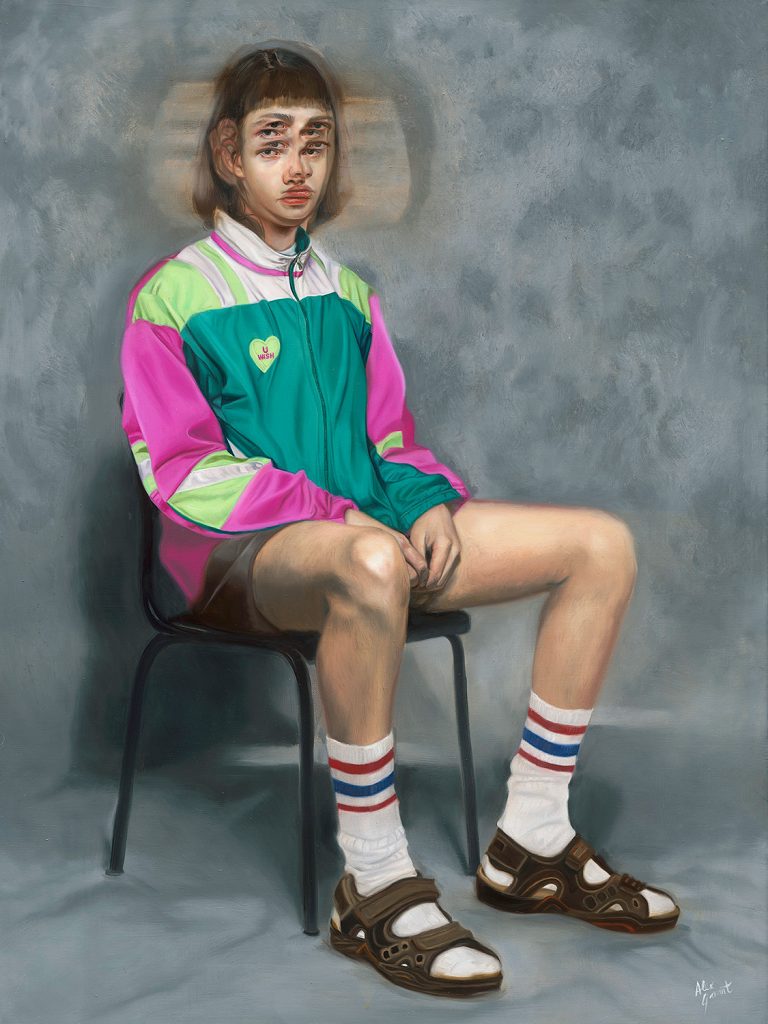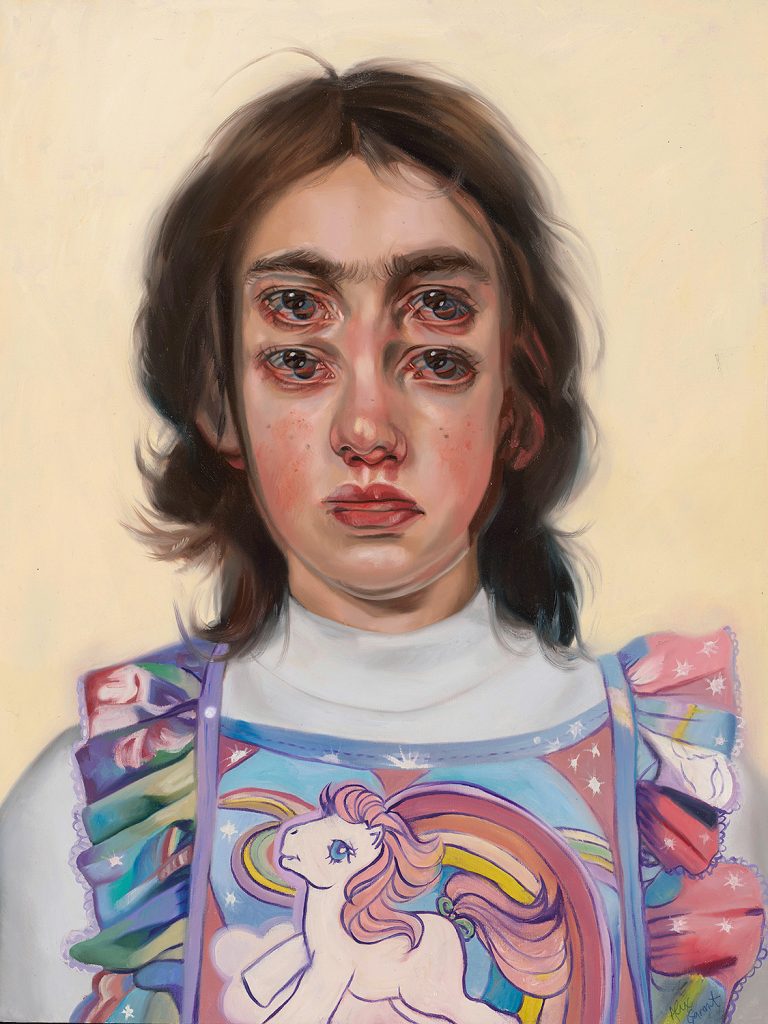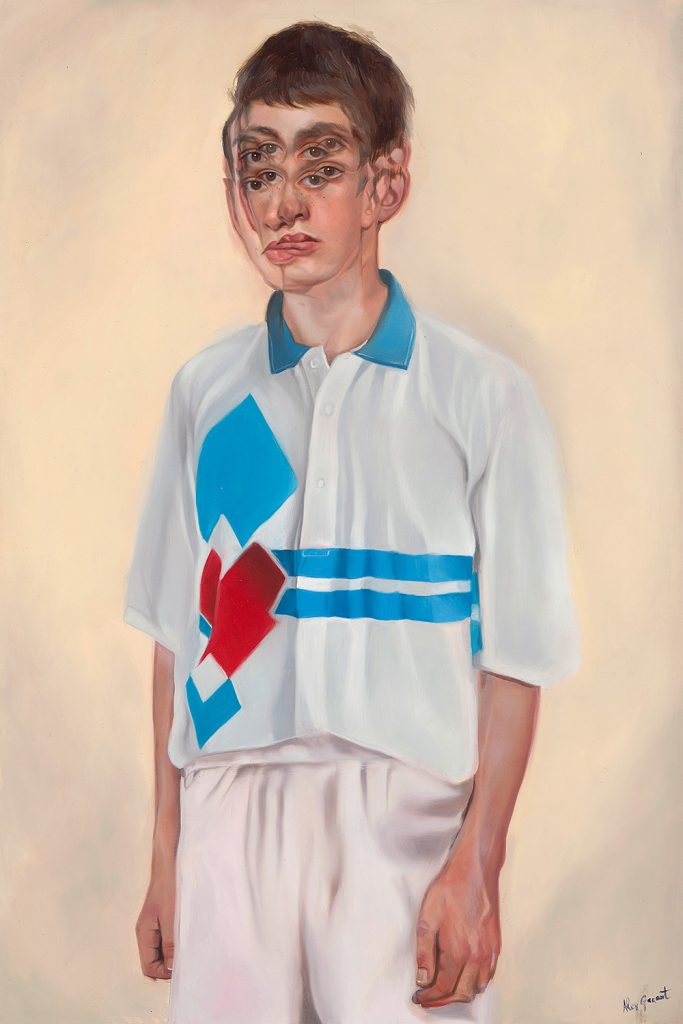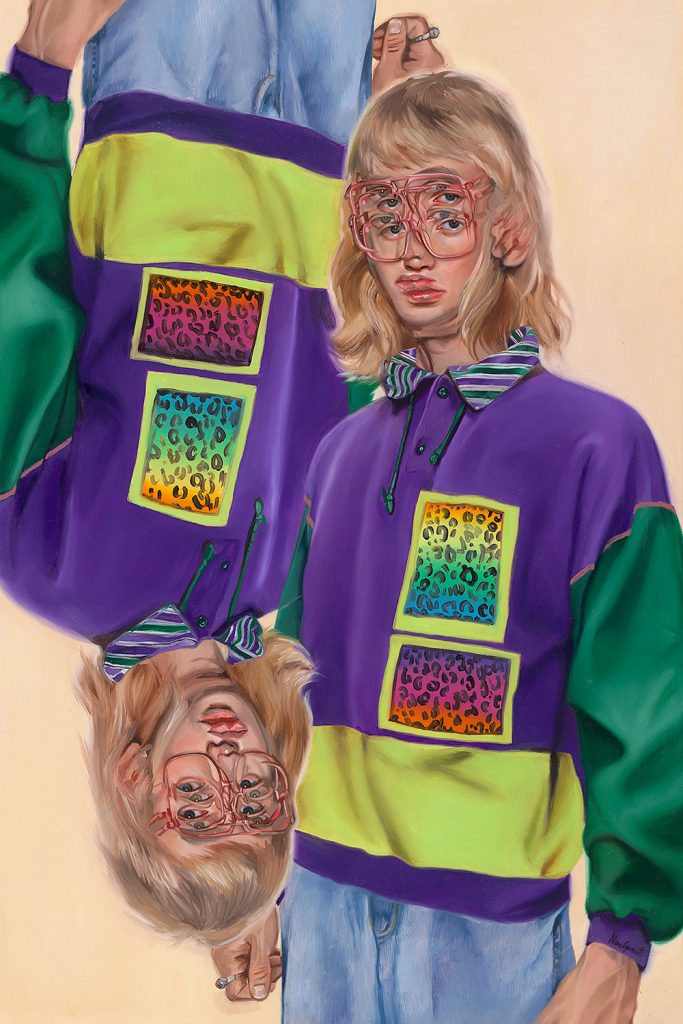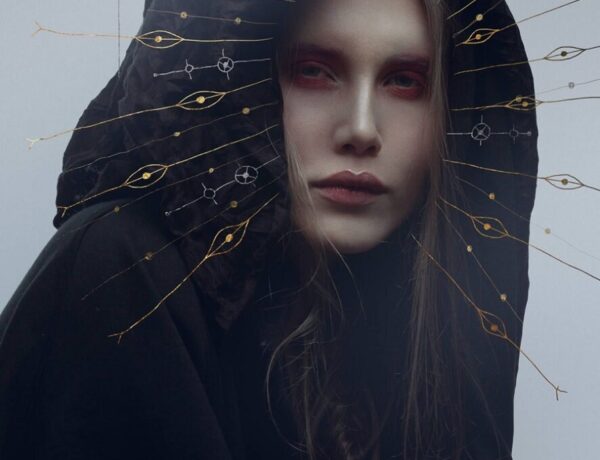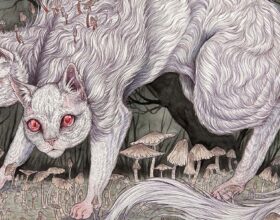Thinkspace Projects and Lancaster Museum of Art and History are once again joining forces for an event so spectacular it’s sure to heighten every inch of your creative sensibilities with its limitless inspiration. Featuring solo exhibitions from Kayla Mahaffey, Kevin Peterson, Kathy Ager and Alex Garant, the lineup also includes “The New Vanguard III”, curated by Thinkspace Projects, as well as their “Small Victories” group exhibition, which advocates the critical importance of mental health and suicide prevention.
Join Thinkspace Projects and Lancaster Museum of Art and History as they honor each artist’s distinct styles and interpretations respectively.
Opening Reception: Friday, September 11, 2020 (with virtual opening via Instagram Live)
Exhibition Dates: September 12 – December 27, 2020
Thinkspace Projects has a full schedule of online events for all exhibitions, including virtual tours, live streaming, interviews and much more… so be sure to follow their blog Sour Harvest to stay updated! If you’re looking to add to your budding collection of art, take a moment and visit their store to view available inventory.

Kathy Ager 
Alex Garant 
Kayla Mahaffey 
Kevin Peterson
Thinkspace Projects
6009 Washington Blvd. | Culver City, CA 90232
ph# 310.558.3375 | Tuesday through Saturday Noon to 6pm
Lancaster Museum of Art and History
665 W. Lancaster Blvd.
Lancaster, California 93534
www.LancasterMOAH.org
Kayla Mahaffey | Kevin Peterson | Kathy Ager| Alex Garant
Thinkspace Projects Press // (Lancaster, CA) – The Lancaster Museum of Art and History, in collaboration with Los Angeles’ Thinkspace Projects, is pleased to present “The New Vanguard III”, a dynamic group exhibition of works by international artists working in the New Contemporary art movement. The highly anticipated follow up to 2018’s successful second iteration of The New Vanguard, on view in tandem with this year’s POW WOW! Antelope Valley will feature special solo projects by artists Kevin Peterson, Kayla Mahaffey, Kathy Ager and Alex Garant.
“The New Vanguard III”, in keeping with the first two installments, will present a diverse and expansive group of curated new works. In addition to the solo exhibitions on view from Mahaffey, Peterson, Ager and Garant, we will also be presenting our ’Small Victories’ group show focusing on suicide prevention and mental health. We’ve lost one of our greatest allies and friends and one of our rising stars to this ever growing epidemic in recent years. Sadly this issue is very wide spread in the creative community and we want to help raise awareness and funds. If it helps guide just one person out of the darkness, it was more than worth it to mount this collection of works.
The “Small Victories” special showcase will include new works from ABCNT, Adam Caldwell, Ador, AKACORLEONE, Allison Sommers, Anthony Hurd, Anthony Solano, Atomik, Brad Woodfin, Brian Mashburn, Bryan Valenzuela, Carl Cashman, Charlie Edmiston, Chloe Becky, Clare Toms, David Rice, Derek Gores, Dovie Golden, Dragon76, Drew Young, Edith Lebeau, Eduardo F. Angel, Erik Mark Sandberg, Frank Gonzales, Ghost Beard, Goopmassta, Hilda Palafox, Hola Lou, Huntz Liu, Imon Boy, Jaime Molina, Jimmer Willmott, Kaplan Bunce, Kate Wadsworth, Kelly Vivanco, Ken Flewellyn, Kim Sielbeck, KOZ DOS, Lauren Hana Chai, Mando Marie, Manuel Zamudio, Mari Inukai, McKenzie Fisk, Meggs, Molly Gruninger, Mwanel Pierre-Louis, Nicola Caredda, Patch Whisky, Ricky Watts, Roos van der Vliet, Sean Banister, Shar Tuiasoa, Stephanie Buer, Tati Holt, TMRWLND, Waylon Horner, and Wiley Wallace.
A movement unified as much by its diversity as its similitude, ‘New Contemporary’ has come to denote an important heterogeneity of styles, media, contexts, and activations over the course of its establishment since the 90s. Unified in its fledgling beginnings by a founding countercultural impulse searching for its own nomenclature, the New Contemporary movement’s shifting and inclusive designations have offered alternative narratives over the years to those popularized by the dominant art establishment and its conceptual predilections.
Though stylistically disparate, the work belonging to this rapidly expansive movement reveals a desire to reference the popular, social, and subcultural domains of contemporary experience, grounding, rather than rarifying, imagery in the familiar. Looking to the urban landscape and the kaleidoscopic shift of individual identities within it, these artists use the figurative and narrative to anchor their work in the accessible and aesthetically relatable. A fundamentally democratic stance governs the ambitions of this new guard, ever in search of novel ways to expand rather than to contract.
Kayla Mahaffey, “Adrift”
Born and raised on Chicago’s South Side, Kayla Mahaffey (also known as KaylaMay) is quickly becoming one of the city’s most sought-after artists with her unique blend of flat, cartoon elements with brilliant photo-realism.
Mahaffey’s work gives voice to the unheard stories of contemporary youth and, as explained by the artist, “serves as a guide to bring hope back into our daily lives by cherishing each moment not in the mindset of an adult, but with the fresh eyes and imagination of a child.”
Being born and raised on the South side of Chicago, IL., only ignited Kayla’s love for all things art. The artist elaborates, “seeing the struggle and the support from the community made my work evolve to a concept that is personal to me. I continue to further my technique, and creativity in my field in order to paint a beautiful picture of a new world for those around me. Living in our society can be tough and most of the time we have to make the best of it. A wild imagination can take you so far, but at the end of the day we need to realize and observe the world around us. And the world around us is where I find my inspiration to paint. Colorful paintings that contain hints of whimsy and realism that tell a story of inner thoughts and personal issues that sometimes go unheard.”
Kevin Peterson, “Embers”
Kevin Peterson, a gifted hyperrealist painter, creates a fictional world in which innocence and collapse are brought into difficult proximity. His arresting images combine portraits of children accompanied by kindly sentient beasts in a state of kindred displacement. Alone, though together, in strangely desolate, richly graffitied urban scenes, these babes and their benevolent conspirators appear interchangeably as beacons of hope and symbols of dispossession.
Peterson’s works harness a dystopian social hyperrealism through painstaking attention to every possible fraction and detail of the mundane in their execution – every contour is excised, every surface meticulously rendered. The weird crystal clarity of the hyperreal in the depiction of these desolate underpasses and structural ruins provides a starkly strange backdrop for elements of fairytale, like the fantastic alliances proposed between children and animals, and the magical narratives these allegiances imply. A psychologically poignant, if not ambiguous, feeling of transformation and hope lingers in these impossibly arresting scenes of solitary kids. The resilience they suggest is haunting, while the unsettling verity with which these vulnerable fictions are cast strike something in our shared fear of literal and figurative exposure.
Always in search of poetic tension and compelling contrasts, Peterson alloys unlikely parts: beginnings and ends collide, the young appear in worn and weathered worlds, innocence is forced into experience, and the wild infringes upon the ‘civilizing’ city limits. In Wild, Peterson explores themes of protection and marginalization, staging wild animals, ironically, in the humanizing and civilizing charge of caregivers. Though a recurring suggestion in previous works, the role of the animal in a nearly shamanistic role as protector and watcher appears more overtly in the new. Small children are attended by wild bears, watchful raccoons, gentle fawns, mythic looking ravens, owls, and jungle cats, among others, as they hold a living and protective vigil against the crumbling architectures around them; their guardianship staged like a protective bulwark. Peterson’s hyperreal paintings are at times uncomfortably close in the pathos of their offerings; they remind us, too, of something uneasily present in us all, a childhood that haunts the posturing of all of our adulthoods. Ultimately, Peterson’s works offer beautifully jarring reminders of the need for redemptive outcomes in a disappointed time.
Kathy Ager, “Fool’s Gold”
Kathy Ager creates detailed, still lifes that feel simultaneously Baroque and acerbically modern. Inspired by the 17th-Century Golden Age of Dutch and Spanish painting, her imagery uses historical visual rhetoric to deliver intensely personal and emotively charged themes. A professional graphic designer-turned painter, this is Ager’s first complete body of work to date and will include ten new paintings.
Ager begins her process with language – an idea or expression often gleaned from music, a book, or some other source that resonates personally. She then endeavors to resolve the concept visually through objects and composition, assembling a patchwork of references – some collective and shared from pop culture, others steeped in the idiosyncrasies of the personal. Both poetic and revelatory, Ager’s works feel charged with the simultaneous misery and beauty of contemporary appropriation – and express the current world through the formal repositories of the past to create anachronistic moments of resonance and delivery. Ever present amidst moments of undeniably expressed disappointment and disillusionment are redemptive linings, beautifully poignant discoveries, and playful, irreverent mirth.
The seductive darkness with which Ager reveals universal human longings is both disarming and consuming. Broken hearts are offered up as organs in a bowl, skeletal memento mori abound, and dating feels about as abject in the modern world as butchery; books are stacked with suggestive spines, and flowers wither while fruit threatens to decay. The abattoir is never far from the transcendent ambitions of classical statuary in Ager’s world, while beauty is embroiled in the vulnerability of intimacy and self-exposure.
Alex Garant, “Deconstructing Identities”
Toronto-based, Canadian, Québéquois artist Alex Garant is a painter known for her hyper-realistically rendered Op art portraits in which the faces and eyes of her subjects seem to skip their registers through image redoubling and superimposition, Garant is in search of the frenetic internal life of the sitter. Not unlike the fugitive flicker of a screen or the spectral layering of multiple film exposures, her portraits reveal an unsettling multiplicity, shifting beneath the subject’s surface. Garant creates faces that challenge the optics of identity and the reductive way in which it is perceived, with a visual gimmick that quite literally dislodges and displaces its coherence to produce skittering psychological images of fracture and ricochet.
Garant has long been fascinated by the interaction of patterns and symmetry, and the resulting optics of their graphic repetition and layering. Her portraits begin with a series of superimposed drawings based on her sitters, actual individuals, and muses from her life, and pushes the familiar confines of portraiture to a newly strange and re-sensitized place of sensory confusion. Her subjects and their energy seem to erupt from within, testing the tensile seams of the skin, the body, as always, an insufficient vessel for the incongruous experience within.
The artist’s labor-intensive oil paintings are meticulously executed, often incorporating patterning or other graphic elements and motifs to produce reverberating visual effects. Her color palette ranges from the subtlety of realistic flesh tones to hyper-colored gradients, saturated pastels, and translucent gem-like washes of color. Her stylizations of these vertiginous portraits thrive in surreal kitsch to interrupt the apprehension of the subject, activating a process of invested viewing, that is of trying to “see” the person amidst the trappings of hallucinatory visual interference. The compelling and somewhat unsuccessful process of attempting to stabilize the image produces a fundamental feeling of perceptual instability, one that intensifies our stolen communion with an evasive subject.


